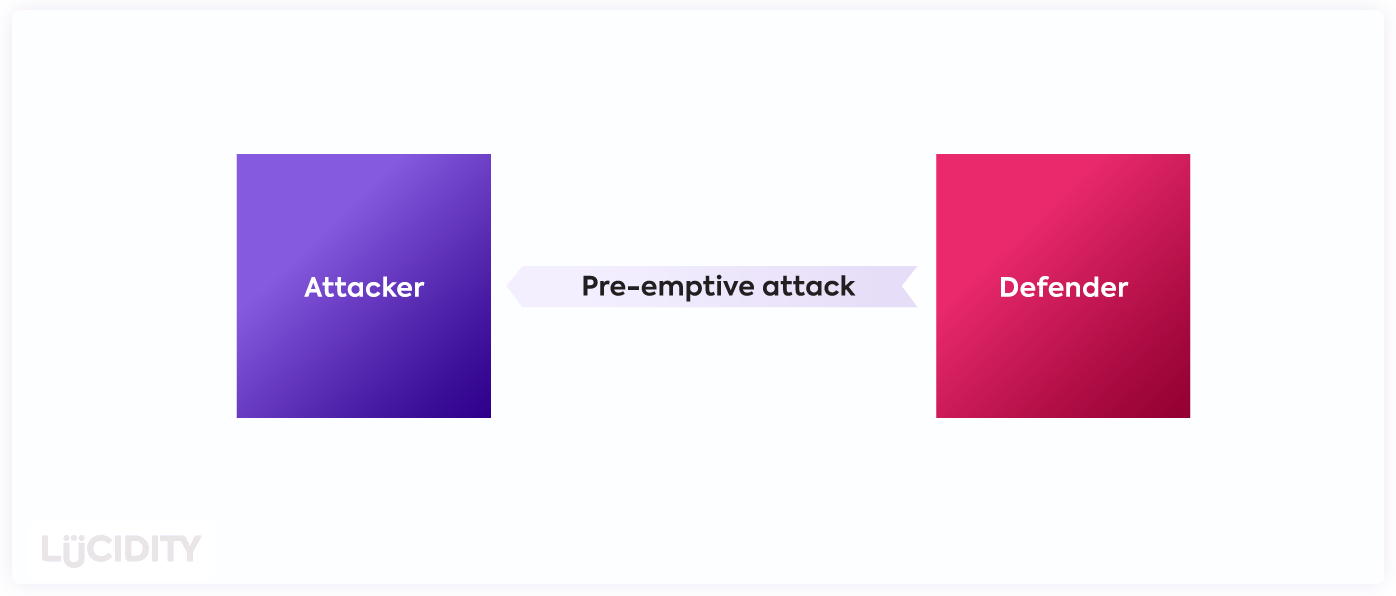They say attack is the best form of defense, which is exactly what a Pre-emptive Defense Strategy is all about. When businesses suspect an attack may be imminent from a competitor, this is one strategy to combat that threat and keep your market position. Let’s take a look in more detail…
What is a Pre-emptive Attack Defense Strategy?
A Pre-emptive Defense Strategy is an approach businesses can take when they sense a threat from a competitior. The idea is to launch an attack on that company before it is able to attack you.
How do you execute a Pre-emptive Attack Defense Strategy?
A Pre-emptive Defense Strategy is really deploying an attack strategy but doing it before the competitor attacks. That means, your options for execution are the traditional attack strategies used in marketing. They are:
- Frontal Attack Strategy
- Flanking Attack Strategy
- Bypass Attack Strategy
- Guerrilla Attack Strategy
- Encirclement Attack Strategy
It’s usually the case that the competitor you’re attacking in pre-emptive defense is smaller or new to the market, so all the options above are possible, but, arguably, Guerrilla will be less effective.
You can find out more in our Ultimate Guide to Attack Strategies.
What are the advantages of a Pre-emptive Attack Defense Strategy?
Some of the advantages to this approach include:
- It puts the defender on the front foot
- It can disorientate the attacker as they will need to switch to defending, and do it quickly
- It disrupts initial attack plans
- It protects your company from attacks
What are the disadvantages of a Pre-emptive Attack Defense Strategy?
Some disadvantages include:
- You may be wasting resource and effort on a competitor who would not effectively be able to attack you in the first place
- It distracts you from moving the business forward
What are some examples of a Pre-emptive Attack Defense Strategy?
A pre-emptive defense can take many forms. Examples include:
- Deploying a direct attack strategy such as the above list of attack strategies
- Acquiring a potential competitor to prevent it attacking or taking market share
- Restricting the ability for competition with patents, contracts or regulation
What are the alternatives to a Pre-emptive Attack Defense Strategy?
Counter-Offensive Attack
This is very similar to the Pre-emptive Defense Strategy, the only difference being that, in this case, the defending company waits until the attacker makes their move before it starts to retaliate.
Flanking Defense
A flanking defense strategy involves focusing on weak spots within a company and investing in them to ensure they are able to withstand a Flanking Attack Strategy from a competitor.
Mobile Defense
A Mobile Defense strategy requires constant altering of position in order for it to be difficult for an attacker to plan and execute an attack strategy effectively.
Position Defense
Position Defense is the strategy of maintaining a position within the mindset of the buyer to try to make the brand reliant to any form of attack.
Strategic Withdrawal
This is a dramatic one that involves waving the white flag and exiting the market. It can be part of deciding your focus areas and consolidating to ensure you are successful in other markets, or perhaps a particular product is in decline and you see no future in it. After all, good strategy can be as much about saying no as saying yes!
Let’s help you build your defense strategy and keep winning
Book a demo and let us show you how easy it is to build your strategy, nail the execution and track the results in Lucidity.












